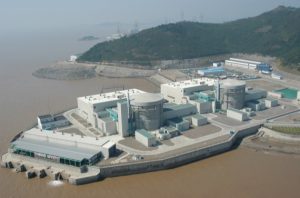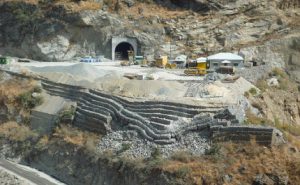Some members of the nuclear power industry rely too much on theoretical calculations, when only experience can provide real accuracy.
The lifetime of nuclear reactors is calculated in “reactor-years”. One reactor year means one reactor operating for one year. The world’s 443 nuclear power plants have been running for a total of 14,767 reactor-years, during which time there have been 23 accidents involving a reactor core melting. That’s one major accident every 624 reactor years.
But according to the design requirements, an accident of that scale should only happen once every 20,000 reactor years. The actual incidence is 32 times higher than the theory allows.
Some argue this criticism is unfair. After all, 17 of those 23 accidents were caused by human error – something hard to account for in calculations. But human error is impossible to eliminate, and cannot be ignored when making major policy decisions.
Even if we set aside the accidents attributed to human error, technical failings have caused core melting once every 2,461 reactor-years. That’s still more than eight times the theoretical calculation.
Lessons from the US, Russia and Japan
The US and former Soviet Union had been operating nuclear power for 267 and 162 reactor-years respectively before a major accident occurred. Japan managed to get to 1,442 reactor-years before Fukushima struck.
At the time of the Three Mile Island accident in 1979, the US had 52 nuclear power stations, which had been operating for 267 reactor years, or an average of 5.1 years per reactor. At the time of the Chernobyl disaster in 1986, the Soviet Union’s power plants had been running for an average of just 3.5 reactor years.
Why did the US and Soviet Union experience accidents so quickly? First, the US rapidly built more than 50 nuclear power stations, and the larger the sample the larger the chances of an incident. Second, as the first country to experience a major nuclear accident, the US was operating with little experience. In the Soviet Union, another factor was also at play – major design failings in the technology used.
After these events, improvements in nuclear safety were made worldwide. The biggest advances came in the US. First, the rate of expansion was slowed, with a complete halt to new plants during president Carter’s administration. Second, technological improvements greatly reduced the chances of an accident. Third, there was a strong focus on developing new types of nuclear power stations. Fourth, the US continued actively to export nuclear technology, allowing it to observe nuclear safety at a safe distance. Fifth, safety management was strengthened.
Thanks to these important measures, there has been no major accident in either the US or the former Soviet Union since 1986.
But other countries have suffered.
Despite drawing on the lessons of the past and enjoying a late start, Japan was still hit by a major accident after 1,442 reactor years.
The only country with more than 50 nuclear power plants not to have suffered a major accident is France, with 58 nuclear power stations and a total of 1,519 reactor-years.
France has a lot of advantages in the nuclear field – a long history of nuclear technology and domestic research, good nuclear fuel reprocessing facilities and comprehensive policies on nuclear development. Moreover, it isn’t prone to earthquakes, has a moderate climate and is expected to be less threatened by global warming.
A number of people have predicted that France could be vulnerable to a terrorist attack on its nuclear facilities in the near future, with the potential to cause a major disaster. After Fukushima, security was stepped up at the country’s nuclear power stations, but it’s too early to say if this will ensure another six decades of safe operation.
How long can China’s nuclear industry stay “safe”?
China already has 15 nuclear power stations, and looks set to have 41 by 2015. These have been built using various different models, with technology imported from France, Russia, the US and Canada. There’s also the Taishan plant, which uses an adapted Chinese-developed nuclear submarine reactor. Mostly, China’s existing nuclear power stations use second-generation technology.
China is projected to have 71 nuclear power stations by 2020. If we use the figure of 4,922 reactor-years as explained above, then China will “most probably” suffer a major nuclear accident within the next 69 years.
Chinese nuclear technology can be regarded as approaching global levels, with similar design, safety and operational standards. But to reduce costs, Chinese designs often cut back on safety. In the past, earthquake-resilience was lower than in Japan, for example. China also has much less experience of this sector than Japan.
Qian Shaojun, a member of the Chinese Academy of Engineering, has repeatedly said that nuclear safety relies on experience – you cannot claim something is safe until it has been operating for a certain number of reactor years. Japan has at least 10 times as many reactor-years of experience as China.
China has a similar likelihood of natural disasters to Japan, but the quality of its nuclear staff lags behind.
It’s not that Chinese nuclear power technicians fall short in design ability. But they have less design and management experience than their Japanese counterparts.
If we refer to the data from Japan’s experiences, China will “most probably” suffer a nuclear disaster around 2050.
But if China sticks to plans to build another 30 third-generation power stations between 2015 and 2020, the risks rocket. No AP1000 reactors – one of the key third-generation designs – have yet been built anywhere in the world, meaning there are no reactor-years of experience. Only the figures of 267 reactor-years from Three Mile Island’s 267 reactor years and Chernobyl’s 162 reactor-years can be used as reference. Even if we take the larger of those numbers, that brings the “most probable” period for a nuclear accident in China forward to between 2020 and 2030.
Some may say that “theoretically” third-generation reactors are safer than their second-generation equivalents. In fact, these 30 nuclear power plants will use reactors that have not been operationally tested. They are all being built inland and all face problems with water supply. Several third-generation plants, including Pengze in Jiangxi and Taohuajiang in Hunan, each with six reactors, cheated during the environmental impact assessment process, with no action taken by the National Nuclear Safety Administration.
For safety’s sake, it would be better to stop at 41 reactors, a number due to be reached in 2015.
The Great Leap Forward mentality
Why did the US and former Soviet Union see nuclear accidents so soon? Apart from a lack of experience and immature technology, another factor was the Cold War mentality – both were fighting to be the world’s number one nuclear power.
Similar attitudes exist in China today. Nuclear decision-makers aim to build up to 500 nuclear power stations by 2050, exceeding the current global total of 443, and allowing the country to claim the world’s number one spot.
This is nothing but Great Leap Forward thinking. If these attitudes continue, we will likely see “most probable” will become the “actual”.





